Chinese Name: 绒布寺 Pronunciation: róng bù sì
Building Time: 1899
Admission Ticket Fare: 35 yuan
Opening Hours: 9:00-16:00
Suggested Visiting Hours: 1-2 Hours
Height: 5,154m at the topmost point
Best Visiting Season: Spring and Autumn (April to October)
Building Function: To provide a quiet place where pilgrims can worship Buddha and also have a rest.
Address: Located on the "Zhuoma" (Tara) peak on the east and west side of the Lower Rongbuk valley of Mount Qomolangma, south of Basong Township, Tingri County, Xigaze Region, Tibet.
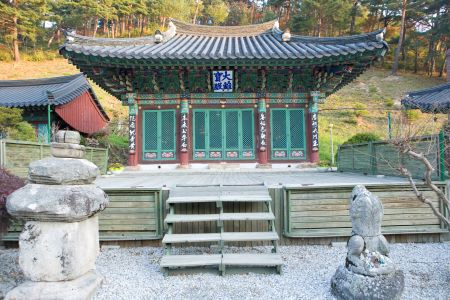
Rongbuk Monastery was first built in 1899 by the Buddhist monk, Avant Tenzin Lub. It is located at the end of the Rongbuk Glacier at the north foot of the Mount Qomolangma, with an altitude of 5,154 meters, about 20 kilometers from the summit of the Mountain. It's the highest monastery in the world, so the view is fantastic and attractive.
As a mixed monastery with strong local characteristics, the Rongbuk Temple is a monastery of the Tibetan Nyingma Sect. Nyingma Sect is main religion here. The Mani Temple, under the white pagoda outside the Rongbuk Monastery, is where local Buddhists pray for good luck for themselves. In front of the main hall of Rongbuk Monastery, there are Buddha statues such as Sakyamuni Statue and Padmasana Statue.
The Rongbuk Monastery is built on the mountain, with white pagodas, high mani stones, golden pylons, and fluttering prayer flags, the magnificent temple stands out on the winter hill and looks very attractive.
The Rongbuk Monastery has five floors, only two of which are used. When Rongbuk Monastery flourished, it had more than 300 monks, more than 300 bhikshus and more than 20 halls. At the same time, it is said that the main reason why the temple was built so high was that it was quiet and suitable for people to rest.
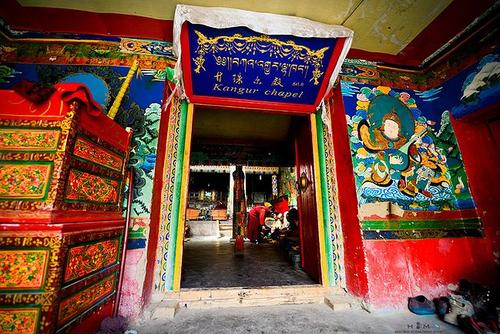
And up the steps, tourists were immediately attracted by the exquisite frescoes on both sides of the door of the oratory, with bright colors, soft lines and clear and vivid figures. After entering the chanting sutra hall, we can find that we entered the hall of murals. The walls of the entire chanting sutra hall were full of murals, with more abundant figures of different sizes, but there was no sense of clutter at all.
The Rongbuk Monastery is the base camp for climbing Mount Qomolangma from the north slope. Overlooking here to the south, you can see the mountain which like a huge pyramid, standing tall among the peaks, which is daunting.
Now, the Rongbuk Monastery tourism has also been developing. The temple has one hostel with 30 rooms, more than 100 beds, catering to Chinese and foreign tourists, as well as a restaurant and canteen. Despite the humble conditions, every traveler can enjoy hot noodles, rice, stir-fried dishes and a variety of convenient and canned foods.
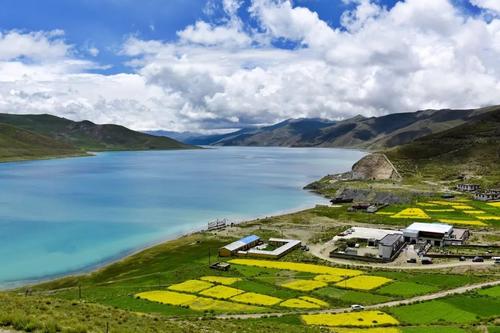
In 1899, with a history of more than 120 years to date, the Rongbuk Monastery was first built by the Buddhist monk, Avant Tenzin Lub. It is divided into old and new temples. The old temple is located 3 kilometers south of the new temple, near Mount Qomolangma. There are still Padmasambhava's practice cave, stones and stone towers imprinted with the fingerprints and footprints of Padmasambhava.
The new temple was built in 1902, and Rongbuk Monastery was once quite large, with more than a dozen temples, some still in Nepal, which were later destroyed due to historical reasons.
Worshippers come to worship every day. Believers are both old and young and the youngest is a baby. His mother carried him to the shrine, using the five-for-five way, three small knocks, five devout steps. Many worshippers will start from the foot of the mountain and worship at the temple door.
The worshippers whose physical strength is not very good will start from the temple not far away. Every action, every word silently uttered in the heart, is a prayer.
In 1983, the Rongbuk Monastery underwent extensive construction. There are a large number of murals here and they are worth looking at carefully.
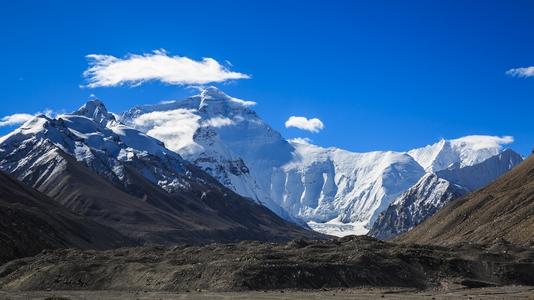
Rongbuk Temple, the highest temple in the world, is very famous. It is built on a hillside of the world's highest peak, Mount Qomolangma (8,844.43 meters above sea level), just over 20 kilometers away, adding a touch of mystery to the temple.
Since ancient times, the Tibetan people have revered Mount Qomolangma as a god. Rongbuk Monastery is the best place to see Mount Qomolangma. Looking south here, it's a great place to photograph Mount Qomolangma. When the weather is clear, you can see a group of milky white clouds, like a white flag flying above Qomolangma. It is known as the "World's Highest Flag Cloud" and the wonder of the world.
It is about 8 kilometers from Rongbuk Monastery to Everest Base Camp. Many tourists who like climbing and adventure will come to challenge Mount Qomolangma. Before climbing the mountain, they will go to the Rongbuk Monastery to look for Sangjie who is the only monk in the temple now to bless them, hoping to be safe when climbing Mount Qomolangma.
In terms of climbing Mount Qomolangma, it is a two-hour walk and a 15-minute car ride from Rongbuk Monastery, via the canyons, cliffs and grotesque rocks to Everest Base Camp. The best time to climb Mount Qomolangma are April-June and September-October when the weather is the best of the year.
And also it is the best time to see Mount Qomolangma early in the morning or in the evening when the scenery is the most pleasant. Because the altitude is high, it is recommended to carry anti-high products to prevent altitude sickness.
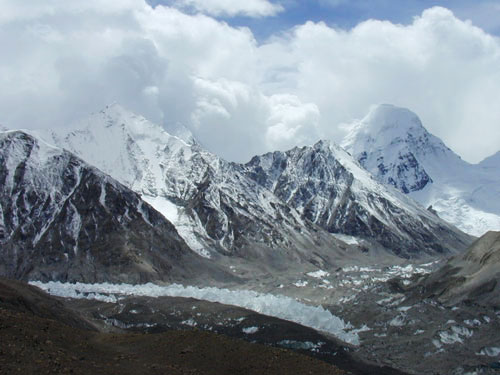
Rongbuk River at the foot of Rongbuk Monastery is an ice-water river formed by three glaciers on the north slope of Qomolangma - Dongrongbuk Glacier, Zhongrongbuk Glacier and Xirongbuk Glacier.
There are 15 glaciers on Mount Qomolangma with an area of more than 10 square kilometers. The largest one of the Rongbuk Glacier is 26 kilometers long with an average thickness of 120 meters and the thickest one is more than 300 meters.
These glaciers are of a variety of types, with the top point 7,260 meters. The supply of glaciers is mainly formed by the metamorphism of snow in the Indian Ocean monsoon belt. One of the largest and most famous glaciers is the Compound valley glacier - Rongbuk glacier. The glacier tongue is 14 kilometers wide on average and covers an area of 86.89 square kilometers.
There are many beautiful and rare ice tower forests, ice velvet, ice bridge, ice tower and other strange, beautiful ice shapes in the area of Rongbuk Glacier. People would enjoy the peculiar scene and have a wonderful journey. At the same time, there are ice cliffs tens of meters high, light and dark crevasses, and dangerous ice avalanche areas. The visitors must take close attention to this danger when they visit the glacier.
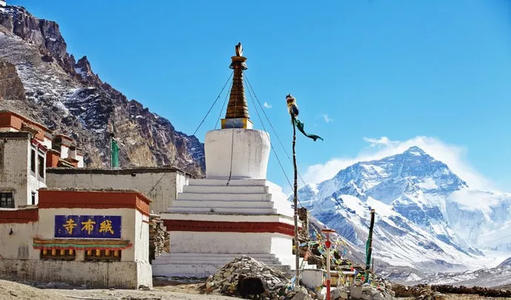
The base camp of Qomolangma refers to the living zone set up to watch the environment of the core area of Qomolangma, with an altitude of 5,200 meters and a direct line distance of about 19 kilometers from the summit of Qomolangma. There are two camps in China. The West Slope Base Camp and the East Slope Base Camp.
The camp, south of Rongbuk Monastery, is a cluster of tent hotels surrounded by a national flag and an Everest reserve flag. It is a national AAAAA tourist area, belonging to the plateau mountain climate. It mainly provides accommodation for tourists, with toilets and a tent post office, which is the highest post office in China. And from April to June and September to October every year is the best time to travel. There are no permanent buildings at the base camp except for the two public toilets that represent modern civilization.
And also, in the past, the only place near Everest Base Camp that could provide accommodation for tourists was Rongbuk Temple. They stayed at the Monastery hotel in poor conditions, but it was easy to watch the morning and evening scenery of Mount Qomolangma.
Between early April and the end of May is the best time to reach the summit of Mount Qomolangma, so the base camp is home to good climbers from all over the world. Many outdoor tents of world-famous brands are colorfully scattered on the empty base campground, which looks quite spectacular.
During the climbing season, the base camp has liaison officers with the Tibet Mountaineering Association, from whom you can buy a small amount of food and drink, but you need to pay a staggering price.
On April 5, 2006, China's first team of amateur mountaineers entered the base camp and most of them reached the summit.
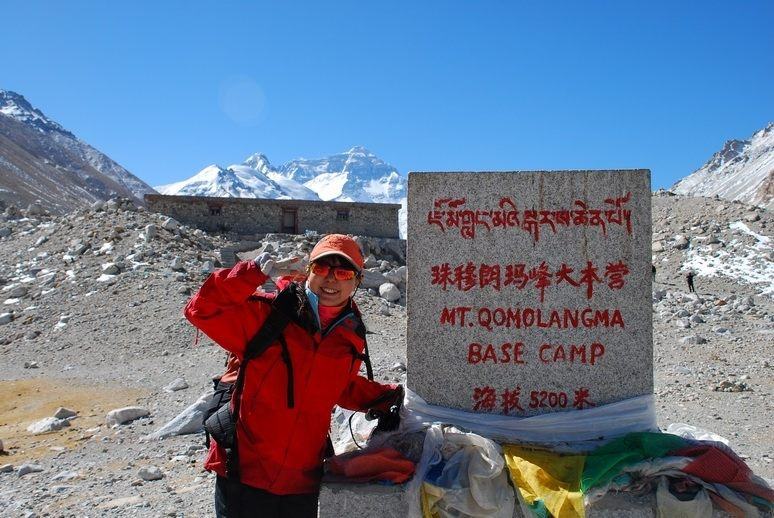
Designed by Tashi Doji from the Bureau of Surveying and Mapping of Tibet Autonomous Region, the Monument is located on a small hill on the west side of Everest Base Camp at an altitude of 5,200 meters, about 15 kilometers away from the mountain as the crow flies.
The monument is 2.4 meters high, 1.2 meters wide and 0.2 meters thick, with a pedestal of 0.95 meters and a total height of 3.35 meters. Made of a block of granite, the overall shape of the monument is similar to the shape of Mount Qomolangma, engraved with Chinese, Tibetan and British three languages "Everest Elevation Survey Monument".
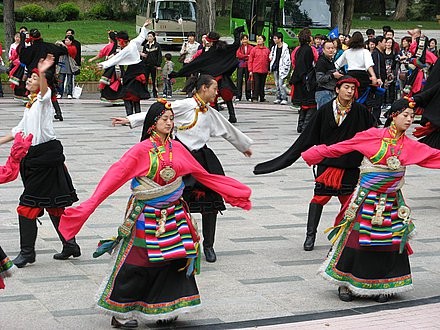
Qiang’s Dance is a religious dance, also known as "dancing god”. Every year the Tibetans held three days of god skipping activities on April 15 of the Tibetan calendar and held a grand exorcism ceremony on November 29.
According to legend, April 15 of the Tibetan calendar is the day on which Buddha Sakyamuni was born. As a result, a variety of activities were held during the month to be commemorated, and over time these activities evolved into festivals with a large scale of chanting sutras as the main activity.
It was a very busy day. Many tents were quartered at the base of the temple, and the villagers who had come to see the dance had stayed there in advance. People rush in and out of the newly decorated Rongbuk Temple. New green prayer flags flutter from the hills and colorful flags, prayer flags and decorations hang everywhere.
Most Tibetans came to watch, carrying buttered tea and Zanba. At ten o 'clock the Qiang dance of the day began. After a prelude by monks in yellow-crested dharma caps, Awang, the first monk to appear, slowly turns down the wooden staircase on the left side of the courtyard and stands in the courtyard and plays dharma cymbals to greet one monk after another descending the stairs.
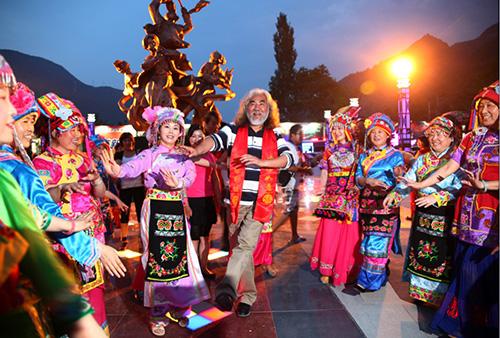
The crowd cheered when the monks dressed in colorful vestments and have been jumping around the yard. In the center of the courtyard, it was a tall pillar with yellow, red and blue prayer flags, around which they danced without haste or delay.
There are eight monks, wearing top hats, who looked stunning as they walked together.
The third scene was the same group of monks, but their outfit was cute and cartoonish: skirts, pantaloons, masks and tricolour flags on the heads. Half of them had green drums in their hands and were beating while dancing. To the long sounds of suona and cymbals, the monks immerse themselves in every gesture and step.
Almost every Qiang Dance’s costume was required a completely different color palette. The scene was lively and people enjoyed a spectacular show.
Chinese: 请带我去绒布寺。English: Please take me to the Rongbuk Monastery.
If you go to the Rongbuk Monastery, you’d better rent a car from Tingri, because there is no bus or taxi available. The whole trip will take about 3 hours.
